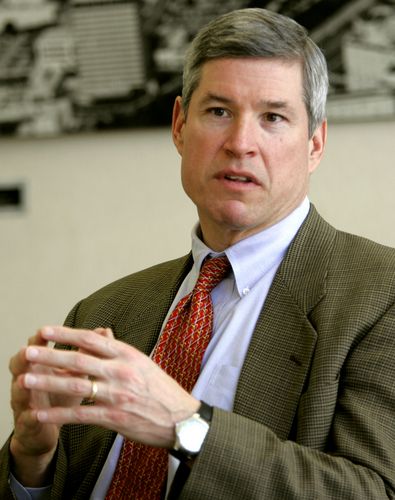For a brief period this spring the convertible bond market began to show signs of emerging from years of lethargy. Long relegated to the backwaters of corporate finance, the asset class gained traction among a handful of technology companies that boasted attractive credit profiles and favourable growth characteristics.
To view the digital version of this report, please click here.
Priceline.com, rated Triple B, was the first of several issuers to tap into unmet demand with a US$875m, six-year unsecured CB in March that featured a 50% conversion premium; at the time among the highest premiums in years. Equally impressive was the ultra-low 1% coupon paid for the liquidity bump, making the CB a compelling alternative to straight debt.
“We had seen very little issuance when this deal was done, particularly by investment-grade companies,” said Jason Lee, global head of equity-linked solutions at Goldman Sachs, sole bookrunner on the Priceline CB. “A lot of the existing investment-grade paper was issued in 2005–07 timeframe, and a lot of that had rolled off.”
The declining market for convertibles has largely been driven by insufficient supply. From an all-time high in 2008, the size of the convertible bond market in the US has shrunk from US$350bn to about US$200bn, and the investment-grade component of the universe has fallen from 45% to 25%, according to analysts at Barclays.
The major reason for the decline is that persistently low interest rates, dating back to quantitative easing that began in 2008, has made it more compelling for companies to simply sell debt rather than debt-plus-call option (a convertible bond). Total issuance of CBs in the US last year fell from US$34.8bn in 2010 to US$24bn, as compared with high-yield volumes of US$223.7bn in 2011.
Year-to-date issuance through May of US$7.7bn puts full-year CB issuance at US$18.7bn.
Accounting changes that went into effect at the end of 2008 also served to make convertible bonds less attractive than straight debt, particularly for investment-grade companies. Specifically, companies were forced to bifurcate net-share settle convertibles, by separating the security into equity and debt components and flowing through interest expenses on the income statement at the cash-plus-accreted rate rather than the actual cash interest paid out to investors – effectively undermining the cash saving of a CB versus straight debt.
While the accounting change had no effect on cashflows, it suppressed earnings per share. Logic suggested that if companies received no benefit, then they might as well look to straight debt funding, particularly for large, rated companies. Technology companies are an exception.
The chase
Priceline was in many ways the perfect candidate for a convertible bond – an investment-grade credit, growing fast and with a volatile share price. The company had been pitched by banks on various financing alternatives involving a CB over the past couple of years, allowing it to run a competitive process.
Goldman Sachs accelerated discussions by offering to backstop a deal at the 1% coupon and 50% conversion premium. Other banks that previously had pitched for the business were invited to submit bids at a lower coupon, with the conversion premium fixed and a commitment to repurchase US$200m of stock in conjunction with the placement.
Bank of America Merrill Lynch and JP Morgan, which teamed up on a US$575m, five-year CB for Priceline in March 2010, were among the shortlist of banks also invited to bid, according to various market sources at the time – such competitive processes became increasingly common for coveted issuers, further highlighting a market starved for supply.
Rather than being backed into a corner, as rivals had hoped, Goldman had little trouble attracting investor interest. The bank marketed the deal on an overnight basis at 98.5–99.5 at the fixed terms, before finalising pricing at the top end of that range. It subsequently exercised its overallotment option to increase the total size of the funding to US$995m.
Significantly the majority of the offering was placed with long-only outright investors. “We saw significant interest from outright buyers, both in the US and Europe,” said Lee. “A lot of buyers in Europe are orientated toward investment-grade paper because of their charters.”
The extent of outright participation was evident in the ability to decrease the share repurchase, a hedge-fund friendly feature to facilitate short selling, from US$200m to US$166m. Calamos Advisors, an outright investor, was the largest holder, with 10.5% of the CB, as of mid-May, according to regulatory filings.
For Priceline, the financing was purely opportunistic. Although it has significant liquidity, finishing last year with US$2.7bn of cash and short-term investments, US$1.7bn of that was housed offshore, forcing it to pay taxes to repatriate. It made more sense to keep the money abroad, given that much of its growth is overseas – one-third of bookings domestic – following the acquisitions of rentalcars.com in 2010 and Asia-based Agoda in 2007.
The exchange
Less than a week later, Salix Pharmaceuticals seized on the opportunity to lower its funding costs through an attractively priced US$600m, seven-year CB. Overnight marketing by sole bookrunner Bank of America Merrill Lynch culminated in pricing at a 1.5% coupon and a 35% conversion premium, the aggressive end of 1.5%–1.75% and 35% (fixed) price talk.
While not competitive, there were indications that the Salix transaction was at least partially negotiated. At launch, the company indicated that it had reached agreement with certain holders of its 5.5% CB to repurchase a portion of those bonds.
Baker Brothers, a hedge fund that specialises in biotech, held US$44.5m of the of 5.5% notes (US$60m principal) as of December 31, according to regulatory filings. The firm also held US$100.6m out of the US$345m principal of Salix’s 2.75% CB due 2015.
The widely held view of market participants at the time was that Baker Brothers was taken out of the 5.5% notes, and agreed to participate in the new deal – Salix offered to purchase any remaining 5.5% notes at the same terms.
While the principal amount of 5.5% outstanding was relatively small, the cost to take them out was far higher.
Issued in 2008, the 5.5% notes were trading ahead of the launch at 550 because they are so deep-in-the-money (US$9.25 conversion price versus US$48.75 reference), implying a cash takeout of Baker Brothers’ position of roughly US$250m. Theoretically, Baker Brothers took part of that gain and flipped into the new deal.
As an inducement to other investors, Salix agreed to repurchase US$75m of common stock, allowing technical investors to pre-hedge the new issue. With the hedge fund orders in hand, including Baker Brothers, BofA Merrill filled out the balance of the order book with outright investors, said sources at the time.
One reason Salix appeals to investors is an attractive credit profile.
Salix, which focuses on treatments for gastro-intestinal disorders, is projected to generate Ebitda of roughly US$200m in 2012 and US$350m in 2013, leading investors to use a credit spread of Libor plus 450bp, in line with a BB credit profile.
From a capital-structure perspective it made sense to take out the 5.5% notes. In addition to taking out high-cost debt, the company used a portion of the proceeds to enter into a call spread, increasing the effective conversion premium on the new bonds to 75%.
The story
TIBCO Software, a fast-growing provider of data-management solutions, took extra care in marketing a US$600m CB in April. As a first-time issuer, the effort was specifically designed not only to educate investors but to do so to a community of outright investors, on a high-premium security.
“The marketing really worked,” noted David Oakes, co-head of Americas convertible bond origination at Morgan Stanley, a joint bookrunner along with JP Morgan. “TIBCO got better terms after marketing for a day than they would have on an overnight execution.”
Indeed, late interest from outright buyers the day of bookbuilding helped leverage technical buyers that had expressed interest.
The effort culminated in pricing at a 2.25% coupon and 52.5% conversion premium, the aggressive ends of price talk, and an increase in the base deal from US$500m to US$525m – exercise of the overallotment option put final sizing at US$600m. A simultaneous buyback, to meet the needs of hedge funds, was reduced from US$150m to US$121m.
Carry-over interest from fundamental buyers was also evident in a 1.5% rise in the underlying over the marketing period, and further 3.1% rise on the day after pricing. The new CB closed at 102.375–102.75, including the increase in value from the share price rise.
That companies are able to achieve such attractive terms is notable. It seems that, regardless of terms, there are not a lot of high-growth companies that actually need the money. Declining share prices in May – the DJIA fell 6% for the month – and investor move into Treasuries – pushing 10-year US Treasuries below 1.56% – may motivate issuers to sit on the sidelines or consider alternatives.
“For opportunistic financings, the stock price has to be there and the M&A pipeline has to be there. A lot companies have built up liquidity and aren’t just going to put cash on the balance sheet,” said Oakes. “It is significant that it is not because of a lack of investor interest. The right type of company is able get very favourable terms, in part, because of the lack of supply.”


